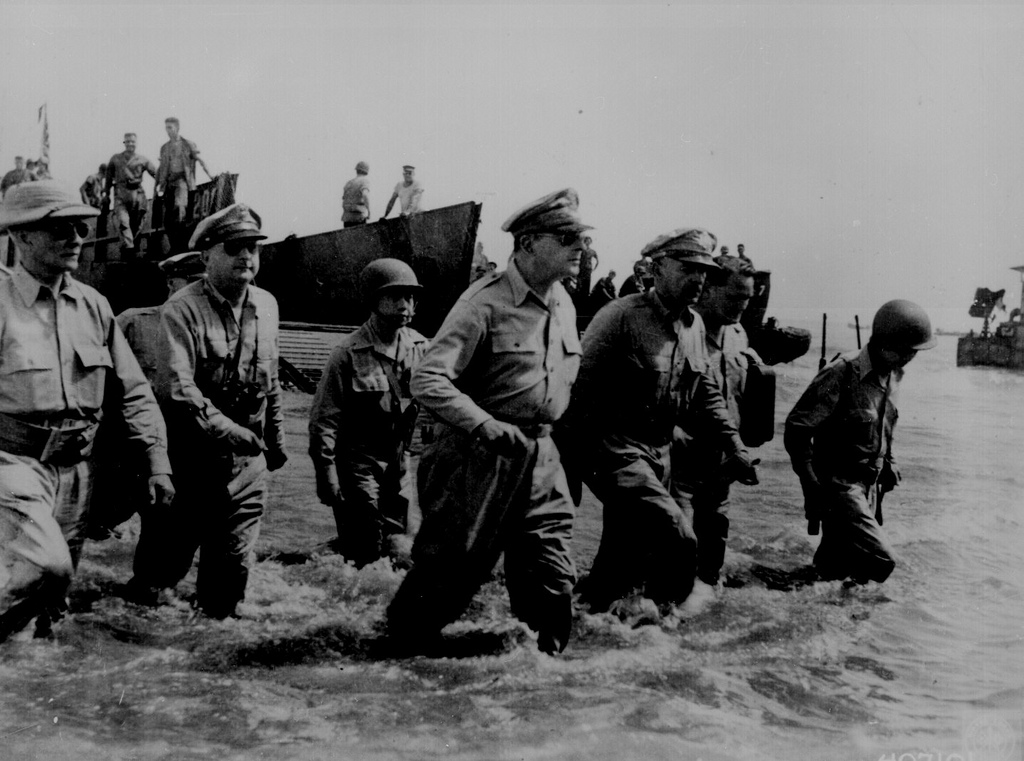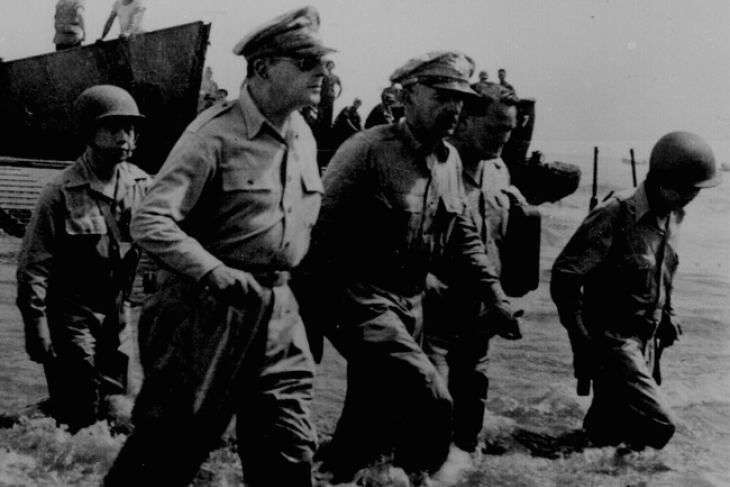 photo credit: roberthuffstutter via photopin cc
photo credit: roberthuffstutter via photopin cc
Much of the criticism recently leveled at the College Board’s new framework for its Advanced Placement United States history course and exam is hysterical and undeserved. There’s also reason to suspect that some of the harshest critics may be motivated at least in part by the riches they have reaped by prepping high school kids for the old version of the test.
That’s not to say the new framework has no flaws. Both Rick Hess and Jeremy Stern have responsibly pointed them out. But the College Board has agreed to undertake revisions. And the sample exam they recently released is pretty good. Among its short questions, I spotted a few that were poorly worded and one that I judged unfair to Ronald Reagan’s foreign policy, but the overwhelming majority looked fine and the medium- and long-answer questions are plenty challenging, well-conceived, and unlikely to be answered successfully without a fair command of the essentials of American history.
But AP framework builders are caught between a rock and a hard place. The fundamental concept of Advanced Placement, after all, is to provide able-enough high school students with college-level coursework that, if successfully mastered, can actually yield them credit as they enter the ivy walls.
It works, too, though not nearly as easily as it once did. Back in the late middle ages, I was able to skip my entire freshman year of college, thanks to “three’s” and “four’s” on the quartet of AP exams I took in high school. These days, however, most colleges demand a “five” before granting any credit. (Why that particular kind of standards-raising has occurred at the same time as grade inflation has afflicted the colleges’ own courses is best examined another day. Surely the main reason is revenue greed: the more credit they grant upon entry, the less tuition their students end up paying, an economic threat that worsens as the population of AP course-takers balloons.)
But securing any sort of postsecondary credit for academic work done in high school means that the College Board (and anyone else devising “early college” strategies) must produce courses that resemble those that the students would otherwise take in college. Which means the content of such courses will be driven primarily by what college professors presently teach in their own lecture halls and seminar rooms. Which in turn means that every philosophical, pedagogical, and political fad to overwhelm the faculties of today’s post-modern campuses will creep into the courses taught to sixteen- and seventeen-year-olds before they even matriculate.
This is a problem for every discipline that makes its way into the AP course catalog, but nowhere is the problem more acute than in U.S. history. For the traditional introductory “survey” course in the subject that was once offered at nearly every college in the land has been replaced or distorted by what’s now academically fashionable and politically correct in university history departments and such national organizations as the American Historical Association (AHA).
And that’s not pretty. Here’s an excerpt from a recent New York Times op-ed by the AHA’s executive director, offered in defense of the AP framework.
[L]earning history means engaging with aspects of the past that are troubling, as well as those that are heroic. There was a time, for example, when historians didn’t worry much about the slave trade and the emergence of an economy based on forced labor. Historians likened the plantation to a “school,” and emancipated people as children let out of class too soon. Only slightly more than a half-century ago, historians began to “revise” that narrative, examining sources previously ignored or unseen, informed by new ideas about race and human agency….This essential process of reconsideration and re-evaluation takes place in all disciplines….And there’s the rub. Fewer and fewer college professors are teaching the United States history our grandparents learned—memorizing a litany of names, dates and facts—and this upsets some people. “College-level work” now requires attention to context, and change over time; includes greater use of primary sources; and reassesses traditional narratives. This is work that requires and builds empathy, an essential aspect of historical thinking.
Set aside briefly the matter of whether “empathy” is an “essential aspect of historical thinking,” and focus on the indisputable fact that “fewer college professors are teaching the United States history our grandparents learned.” Then accept the reality that the content of AP courses is, to a great extent, held hostage to what college professors are teaching. Finally, ask yourself whether the collegiate version of U.S. history—warts and all, with emphasis on the warts—is what you want kids to learn about the nation’s past while in elementary, middle, and high school. Might it not be more important for them to internalize basic chronology, fundamental events, key people, and major accomplishments than to agonize about the injustices and downtrodden of bygone years?
The empathy plague is afflicting our understanding of the country’s past far beyond the campus. Consider Andrew Ferguson’s description of the history exhibits recently installed in the National Archives building in downtown Washington.
[Alongside a display of the Magna Carta] the rest of the museum’s content is shaped by the interests and views of academic historians. These days historians are consumed by their indignation at American injustice….Historians have been so busy correcting these omissions that they’ve lost the thread of the main story they’re supposed to be correcting.
Recall how few Americans ever learned that “main story.” When Diane Ravitch and I wrote What Do Our 17-Year-Olds Know? in 1987, we found—from NAEP data—that most of them could not even place the Civil War in the correct half-century. They were essentially clueless about the central developments of the country’s past and remain so today. The percentage of kids deemed “proficient” on the National Assessment in U.S. history is among the lowest on all subjects tested by NAEP—and hasn’t budged the decades.
The College Board defends its AP course content—in this and other fields—by saying that the Advanced Placement course is supposed to be taken on top of previous instruction in the subject. In other words, they expect school kids to have studied U.S. history before they get to the AP course. Swell if true. But how many high-school students take U.S. history twice? And how satisfactory is the grounding they get from whatever history they studied during K–8 “social studies”?
The trickle downward of university curricular mischief into our schools and other institutions continues unabated, and it’s not a problem that the College Board alone can solve. There are some heartening clues, however, that its leadership wants to do what it can. College Board president (and Common Core standards developer) David Coleman makes no secret of his admiration for E. D. Hirsch, Jr.’s commitment to “Core Knowledge.” And in a wonderful and timely bit of irony, the College Board’s forthcoming renovation of the SAT tests—markedly more influential than the AP (and perhaps the Common Core itself) in shaping what kids have to learn in school if they want to go to a good college—includes enough attention to the seminal documents of American history and the ideas they embody to give pause to Chinese authorities who really don’t want their kids learning about democracy and freedom while preparing to seek entry to a U.S. university.
Reports the Los Angeles Times:
“Including content from America's founding documents in a revised U.S. college entry exam has drawn attention in China, with worries the materials may impose the American values system on students,” China’s official New China News Agency said last week….
“The vital issues central to these documents—freedom, justice, and human dignity among them—have motivated numerous people in the United States and around the globe,” the College Board said in a statement.
But those are the exact values that the Chinese Communist Party has deemed as threatening to its rule; Chinese activists who have tried to promote such values have been silenced or jailed. Human rights advocate Xu Zhiyong, who initiated the New Citizens Movement to promote such values, was sentenced in January to four years in prison.
The news agency’s report cited commentary published recently in the South China Morning Post, a Hong Kong newspaper, about the SAT changes. Author Kelly Yang argued that the new focus on civil liberties may “change the mind-set and world view of an entire generation of Chinese youth.”
“If the new SAT succeeds, it will be the first time America is able to systematically shape the views, beliefs and ideologies of hundreds of thousands of Chinese students every year, not through a popular television show or a politician's speaking tour, but through what the Chinese care about most—exams,” she wrote.
Bravo for the College Board for finding a way to cause more Chinese young people to understand the foundations of democracy. And by all means help your kid prep for the new SAT. As for the new AP in U.S. history, however, once we recognize that, despite its many virtues, its framers had to curtsy before the dubious gods to which most academic historians now pray, the proper work of watchdogs and critics going forward is to press for proper history to be taught in the colleges themselves. They should team up with such worthy outfits as the American Council of Trustees and Alumni and the James Madison Program. They might even suggest that professors assign Bill Bennett’s superb three-volume history text, America: The Last Best Hope. Considering the woeful state of the profession, it’s likely many don’t even know it exists.

